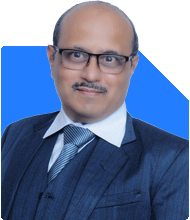Hi Ma'am. I need your advise related to my portfolio and investment strategy. My current FD / bonds corpus is around 1.9cr, MF value of 1.35cr spread across all asset classes, 70 lacs as bank balance and around 20lacs in shares. I have a monthly SIP of 45k which is actively managed by experts. I have my own house and have invested in another under construction flat valued at 3cr. I have an active home loan of 50lacs pending on the flat and need to pay the builder around 1cr as per CLP. As I am NRI, I don't pay any tax on FD / Bonds. I have a son who will start his MBA from next year. I need a corpus of around 10cr to retire in next 7 years. Please can you advise if the current strategy is in line to achieve this retirement goal.
Ans: You have done extremely well in building a strong and diverse portfolio. It reflects many years of discipline, financial awareness, and focus on long-term security. Your current mix of fixed income, mutual funds, equity, and property shows thoughtful asset diversification. The goal of Rs.10 crore corpus in the next 7 years is realistic, provided the strategy stays balanced and dynamically managed. Let’s analyse each part of your portfolio and identify the areas that can be fine-tuned to help you achieve your retirement goal with confidence.
» Assessing your current position
You have a total portfolio value of around Rs.4.15 crore across asset classes.
It includes Rs.1.9 crore in FD and bonds, Rs.1.35 crore in mutual funds, Rs.70 lakh as bank balance, and Rs.20 lakh in shares.
You also own your home and an under-construction flat worth Rs.3 crore with a home loan of Rs.50 lakh and a remaining payment of around Rs.1 crore.
Your current financial base is solid. You also have a stable income stream since you are continuing to earn abroad.
Your family responsibilities include supporting your son’s MBA next year. This will need a separate funding plan so that your long-term retirement goal remains undisturbed.
» Understanding your financial goals
You have two main financial goals right now:
Funding your son’s MBA fully and comfortably.
Building a Rs.10 crore retirement corpus within the next 7 years.
The time frame is medium-term, and therefore the strategy must balance growth with stability. The challenge is to protect what you have already built while still ensuring sufficient growth.
» Review of your asset allocation
Your current portfolio has higher allocation towards fixed income instruments. Rs.1.9 crore in FD and bonds gives security but limits growth potential. These are important for liquidity and capital safety but not for wealth creation.
Your mutual funds and equity together form about Rs.1.55 crore, which is around one-third of your total liquid investments. This portion gives growth potential. However, to reach Rs.10 crore in 7 years, you will need higher exposure to quality growth assets, but done in a controlled and phased manner.
Your real estate holding is significant, but it should not be seen as your main wealth driver. Real estate usually gives moderate long-term returns with low liquidity and uncertain cash flow. It is better to focus more on financial assets that can be reviewed, rebalanced, and withdrawn with flexibility.
» Evaluation of fixed deposits and bonds
As an NRI, you enjoy tax-free interest on certain deposits, which is a good advantage. However, keeping too much in FDs can reduce your overall portfolio return. FD interest rates often fail to beat long-term inflation, especially when the goal is large like Rs.10 crore.
You can gradually move part of your fixed deposits into growth-oriented investments. This can be done in a staggered way through a systematic transfer plan over the next few years.
The remaining portion of fixed income can continue as a safety cushion. That ensures that your family and loan commitments remain secure even during market fluctuations.
» Evaluation of mutual funds
Your mutual fund corpus of Rs.1.35 crore spread across all asset classes is a strong foundation. The presence of active management is a big advantage, as expert fund managers can make timely decisions based on market trends.
Actively managed mutual funds are better suited for your stage and goals. Index funds, though popular, have limitations. They merely copy the market and cannot respond to volatility or protect downside risk. Active funds can rebalance between sectors and stocks to capture better opportunities and avoid underperforming areas. This helps your money grow efficiently while maintaining risk control.
Regular mutual fund reviews every 6 to 12 months with your Certified Financial Planner can ensure that underperforming schemes are weeded out and allocation remains in tune with market conditions.
» Review of direct equity holdings
Your direct equity exposure of Rs.20 lakh adds a good growth layer but must be monitored closely. Individual stocks can be risky if not diversified enough.
You may keep only high-quality, stable companies with proven track record and leadership in their sectors. Avoid speculative or small-cap exposure beyond a small percentage.
Since you already have mutual funds that provide diversification, your direct shares should remain as a small, strategic portion. The aim should be to complement your mutual fund performance, not compete with it.
» Review of real estate exposure
You already own a house and an under-construction flat worth Rs.3 crore. This represents a high allocation to property. Real estate is an illiquid asset and may take time to generate returns or rental income.
Do not depend on property appreciation to meet your retirement goal. The focus should be on creating a financial portfolio that provides growth, liquidity, and passive income flexibility.
Ensure that the pending Rs.1 crore payment and Rs.50 lakh home loan are managed without disturbing your investment flow. Try to complete the property commitment before your retirement timeline, so that no major liabilities remain.
» Review of SIPs and systematic approach
You are already investing Rs.45,000 per month through SIP, which is excellent. SIPs provide discipline and help manage market volatility. Continue with this habit.
You may consider gradually increasing the SIP amount as your income grows. Even a 10–15% increase every year can make a large difference over seven years.
SIP ensures that your portfolio gets cost averaging benefit and stays invested in both high and low market phases. Active management will keep your funds aligned with performance trends.
» Planning for your son’s MBA
Your son’s MBA will likely be a large expense. It may require substantial outflow in the next 2–3 years. Plan this separately from your retirement corpus.
Keep aside a specific amount from your existing bank balance or part of your FDs for his education. That way, your long-term investments can remain undisturbed.
Avoid taking any education loan unless necessary, as you already have strong assets. However, if you do take a small one, it can provide tax benefits and maintain liquidity.
» Managing the home loan strategically
Your current home loan of Rs.50 lakh is manageable within your profile.
Continue paying it as per schedule, but do not rush to close it prematurely if your interest rate is moderate.
Instead, focus on completing the builder payments from your liquid reserves in a structured way. Avoid withdrawing heavily from your mutual funds to make these payments, as that could disturb your compounding growth.
Once construction is complete, if you plan to keep the flat for long-term rental or investment, ensure it gives decent yield compared to your cost. Otherwise, in future, you can evaluate if liquidating it makes sense to strengthen your financial portfolio.
» Assessing the path to Rs.10 crore corpus
You already have Rs.4.15 crore in financial assets.
Over seven years, you have a medium-term horizon where equity and balanced mutual funds can play a strong role.
Your current savings rate and investment habit show that your goal is achievable with consistent growth and controlled risk.
If your portfolio compounds efficiently and your SIPs continue, you can reach close to your Rs.10 crore mark comfortably.
The key factors will be:
Maintaining a good balance between fixed income and growth assets.
Avoiding overexposure to real estate.
Ensuring that no large idle balance remains uninvested.
Staying invested through market ups and downs.
» Liquidity and emergency fund planning
Your Rs.70 lakh bank balance gives you excellent liquidity. You can retain around 6–9 months of expenses and any immediate project commitments as cash.
The remaining can be deployed into short-duration debt funds or liquid strategies to earn slightly better returns without losing flexibility.
This ensures that your emergency fund stays accessible while still productive.
» Tax efficiency and repatriation planning
As an NRI, you have tax advantages on NRE deposits and specific bonds. Use these benefits smartly. However, when you invest in mutual funds, remember taxation applies differently.
For equity mutual funds, long-term capital gains above Rs.1.25 lakh are taxed at 12.5%.
Short-term gains are taxed at 20%.
Debt mutual funds are taxed as per your income slab.
You should aim for longer holding periods to benefit from lower tax on equity gains.
Your Certified Financial Planner can help align your repatriation strategy and tax compliance to your country of residence as well.
» Risk management and insurance
At your asset level, risk protection becomes equally important. Ensure you have proper health insurance that covers your family both in India and abroad.
If you have existing life insurance, review the coverage and tenure. You do not need heavy life cover once your son becomes independent and your liabilities reduce.
Review your property insurance too, especially for the under-construction flat after possession.
» Estate planning and family security
Since you have multiple assets in different categories, make sure you have a clear will in place.
Nomination details should be updated across all accounts, FDs, and mutual funds.
Share a simple written summary of your assets and liabilities with your spouse or trusted family member. This will ensure smooth transition and peace of mind in future.
» Regular review and rebalancing
Every year, review your portfolio with your Certified Financial Planner.
Assess your allocation between fixed income, equity, and cash.
Book profits partially when markets are high and reinvest during dips.
This disciplined rebalancing can add significant value over seven years.
Avoid reacting emotionally to short-term market moves.
Your current asset base is strong enough to absorb fluctuations, provided you stay consistent.
» Finally
You are already well on track towards your Rs.10 crore goal.
Your base portfolio is strong, diversified, and professionally managed.
Only small adjustments are needed to balance liquidity, growth, and safety.
Continue your SIPs, gradually shift some of your FDs to growth assets, manage the home loan carefully, and protect your education funding separately.
With these refinements, your financial journey over the next seven years will remain stable and focused.
Your discipline and early planning have built a solid foundation.
Keep reviewing annually, stay invested, and your Rs.10 crore target can become a comfortable reality.
Best Regards,
K. Ramalingam, MBA, CFP,
Chief Financial Planner,
www.holisticinvestment.in
https://www.youtube.com/@HolisticInvestment
























